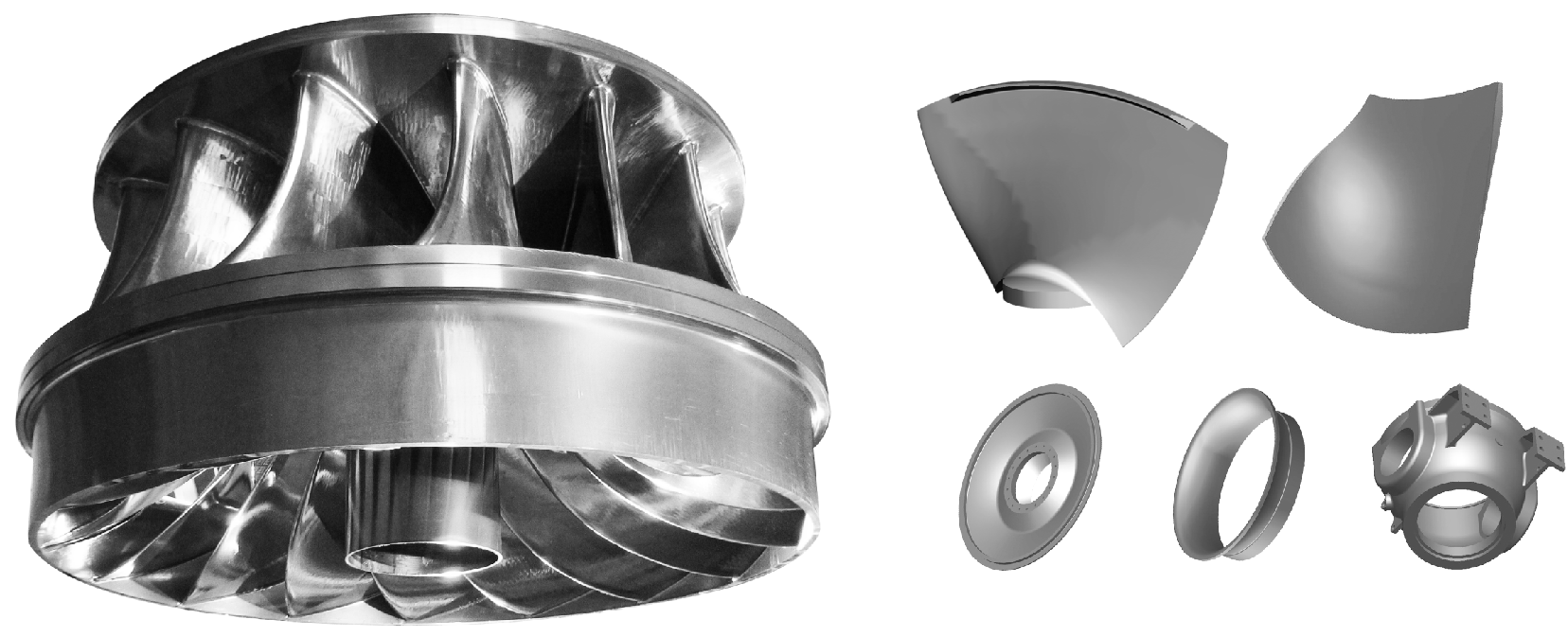Chyba formátu e-mailu
emailCannotEmpty
emailDoesExist
pwdLetterLimtTip
inconsistentPwd
pwdLetterLimtTip
inconsistentPwd

Novinky
What are the Secrets of CNC Machining Titanium Processing Materials?
Physical phenomena of titanium processing
The cutting force of titanium alloy processing is only slightly higher than that of steel with the same hardness, but the physical phenomenon of titanium alloy processing is much more complex than that of steel processing, which makes titanium alloy processing face great difficulties.
The thermal conductivity of most titanium alloys is very low, only 1/7 of steel and 1/16 of aluminum. Therefore, the heat generated in the process of cutting titanium alloy will not be quickly transferred to the workpiece or taken away by the chips but will gather in the cutting area, and the temperature generated can be as high as more than 1000 ℃, which will make the cutting edge of the tool rapidly wear, crack and form chip nodules. The rapidly worn cutting edge will generate more heat in the cutting area and further shorten the service life of the tool.
The high temperature produced in the cutting process destroys the surface integrity of titanium alloy parts at the same time, resulting in the decline of geometric accuracy of parts and the work hardening phenomenon that seriously reduces its fatigue strength.
The elasticity of titanium alloy may be beneficial to the performance of parts, but the elastic deformation of the workpiece is an important reason for vibration in the process of cutting. Cutting pressure makes the "elastic" workpiece leave the tool and rebound so that the friction between the tool and the workpiece is greater than the cutting effect. The friction process will also generate heat, which aggravates the poor thermal conductivity of titanium alloy.
This problem is more serious when machining thin-walled or annular parts that are easy to deform. It is not easy to machine titanium alloy thin-walled parts to the expected dimensional accuracy. As the workpiece material is pushed away by the tool, the local deformation of the thin wall has exceeded the elastic range and produced plastic deformation, and the material strength and hardness of the cutting point are significantly increased. At this time, machining at the originally determined cutting speed becomes too high, which further leads to sharp tool wear.

The technological know-how of processing titanium alloy
Based on the understanding of titanium alloy processing mechanism and previous experience, the main process know-how of titanium alloy processing is as follows:
- The blade with positive angle geometry is used to reduce the cutting force, cutting heat, and workpiece deformation.
- Keep a constant feeding to avoid the hardening of the workpiece. The tool should always be in the feeding state during the cutting process. The radial cutting amount an e during milling should be 30% of the radius.
- High pressure and large flow cutting fluid are used to ensure the thermal stability of the processing process and prevent the surface denaturation of the workpiece and tool damage caused by high temperature.
- Keeping the blade sharp and blunt is the cause of heat accumulation and wear, which is easy to cause tool failure.
- Try to process in the soft state of titanium alloy, because the material becomes more difficult to process after hardening. Heat treatment improves the strength of the material and increases the wear of the blade.
- Use a large tip arc radius or chamfer to cut in, and put more blades into cutting as much as possible. This can reduce the cutting force and heat at every point and prevent local damage. When milling titanium alloy, the cutting speed has a great influence on the tool life VC among the cutting parameters, followed by the radial cutting amount (milling depth) AE.
Solve the problem of titanium processing from the blade
The wear of blade groove in titanium alloy machining is the local wear of the back and front along the cutting depth direction, which is often caused by the hardened layer left by early processing. The chemical reaction and diffusion between the tool and the workpiece material at the processing temperature of more than 800 ℃ are also one of the reasons for the formation of groove wear. Because in the process of machining, titanium molecules of the workpiece accumulate in front of the blade and are "welded" to the blade under high pressure and high temperature, forming chip nodules. When the chip buildup is stripped from the blade, the cemented carbide coating of the blade will be taken away. Therefore, titanium alloy processing requires special blade materials and geometric shapes.
Searching for titanium investment casting, titanium machining services, titanium cnc service manufacturer from China, you can get high-quality products at a nice price.

